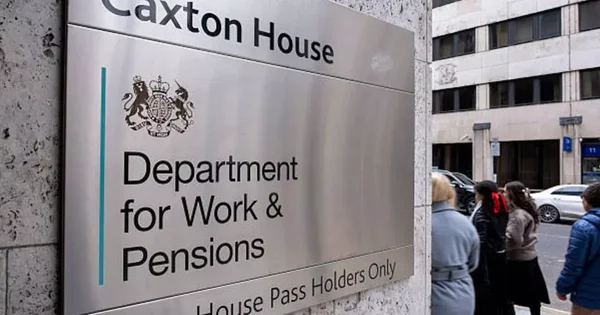Let’s break it down
Understanding when you need to pay Stamp Duty is crucial for anyone buying property in the UK. This tax can significantly impact your budget, and knowing the payment timeline helps you prepare financially.
When you buy property in the UK, it’s essential to understand how stamp duty applies and what thresholds may affect your purchase.
Our Stamp Duty calculator instantly shows exactly what you’ll owe based on your specific circumstances. Or if you’re just here to get to grips with it all, let’s break it down!
What is Stamp Duty Land Tax?
Stamp Duty Land Tax (SDLT) is a tax you pay when buying a property or land over certain price thresholds in England and Northern Ireland. Stamp duty applies to both residential property and non residential property, with different rules and rates for each.
Scotland and Wales have their own versions: land transaction tax applies in Wales, and buildings transaction tax applies in Scotland, each with their own thresholds and rates.
SDLT applies whether you are buying a residential property as your only property, your main residence, or if you own additional properties. If the property is your only residential property, different thresholds and exemptions may apply compared to owning two or more properties.
The main home or main residence status affects the rate of stamp duty and eligibility for reliefs. If you are a first-time buyer purchasing your first property, you may qualify for stamp duty relief, which can reduce or eliminate the tax for properties worth up to a certain amount.
The amount you pay depends on the purchase price and properties worth, as well as whether you are buying a new property, a new build property, or other property types. Stamp duty rates are structured in bands, with the sdlt rate and rate of stamp duty increasing as the purchase price rises.
Stamp duty costs can be significant and should be considered when planning your mortgage and overall payments. You may have the option to add stamp duty to your mortgage, but this will increase your payments and the total interest paid. Understanding all payments involved in purchasing a property is crucial for budgeting.

When Do You Pay Stamp Duty?
Stamp Duty must be paid within 14 days of completing your property purchase. You must pay any stamp duty owed within this period to avoid penalties. This deadline is strict and non-negotiable, with penalties for late payment.
The responsibility falls squarely on you as the buyer, not the seller. The buyer always pays stamp duty during a property transaction. Miss this deadline and you’ll face penalties and interest charges from HMRC.
Most people don’t handle this payment directly. Your solicitor or conveyancer typically manages the Stamp Duty return and payment process on your behalf. The obligation to pay stamp duty is triggered on completion day, when legal ownership transfers.
They’ll calculate the exact amount as part of the purchase process, complete the necessary paperwork, and arrange payment from your funds. This is why their fees usually include an SDLT processing charge.
There are different payment methods and options for making payments to HMRC, such as bank transfer or credit card, depending on your solicitor’s arrangements.
How Much Stamp Duty Will You Pay?
The amount of Stamp Duty you’ll pay depends on several factors, including the property purchase price and your buyer status. Current stamp duty rates are structured in tiers, with a different rate of stamp duty applying to each portion of the price.
First-time buyers get special relief. You’ll pay no Stamp Duty on properties up to £425,000, then 5% on the portion between £425,001 and £625,000.
For other residential buyers, the SDLT rate is 0% on the first £125,000, 2% on the portion from £125,001 to £250,000, and 5% on the portion from £250,001 to £925,000. Higher bands include 10% up to £1.5 million, and 12% on anything above that.
Buying an additional property? Add a 3% surcharge to all the standard stamp duty rates. Non-UK residents face an additional 2% surcharge on top of any other rates.
I remember when I bought my second home in Bristol, the additional property surcharge came as quite a shock. What I thought would be a £7,500 Stamp Duty bill suddenly became £15,000 with the surcharge applied.

Are There Any Exemptions?
Several situations might exempt you from paying Stamp Duty or qualify you for reduced rates. These exemptions can save you thousands of pounds.
First-time buyer relief is the most common exemption, potentially saving you up to £11,250 on properties valued up to £625,000. This makes a significant difference for those getting on the property ladder.
No Stamp Duty applies when property is transferred during a divorce or separation, assuming no additional payment is involved. This prevents additional financial burden during difficult times.
Property transfers where no money changes hands (like gifts) usually don't attract Stamp Duty, though other taxes might apply. Always check with a tax advisor about potential inheritance tax implications.
Special Circumstances That Affect Payment
Shared ownership properties have special Stamp Duty rules. You can pay SDLT in stages as you staircase your ownership or on the full market value upfront.
Buying multiple dwellings in a single transaction might qualify you for Multiple Dwellings Relief. This can potentially reduce your tax bill by calculating duty based on the average property value.
Mixed-use properties (part residential, part commercial) benefit from lower rates than purely residential properties. This can make a substantial difference for properties with business elements.
If you're building your own home, you'll only pay Stamp Duty on the land purchase, not the construction costs. This represents a significant saving for self-builders.
Lease transactions have their own complex SDLT rules. Both the premium paid and the annual rent are considered when calculating the tax due.
Final Thoughts
Stamp Duty represents a substantial extra cost when buying property in the UK. Always factor it into your budget from day one to avoid nasty surprises.
The 14-day payment deadline means you need to have these funds ready at completion. Missing this deadline results in financial penalties that increase the longer payment is delayed.
Tax rules change frequently, so check the latest rates and thresholds before making offers on properties. What applied last year might not apply today!
Consider consulting a tax specialist if your purchase is complex. The right advice could save you more than the cost of the consultation.

Pie tax: Simplifying Stamp Duty Tax
Understanding Stamp Duty doesn't need to be complicated or stressful. The UK's first personal tax app takes the confusion out of property tax calculations.
Pie tax offers real-time tax calculations that instantly show exactly what SDLT you'll owe based on your specific property purchase details. No more guesswork or outdated online calculators.
Our property tax assistants can highlight potential reliefs or exemptions you might qualify for. This personalised approach has saved our users thousands of pounds in unnecessary tax.
We can even help streamline your SDLT return submission directly to HMRC. This ensures you meet the 14-day deadline without hassle or stress.
Curious to see how it works? Explore the Pie tax app today to take the guesswork out of your property tax.









